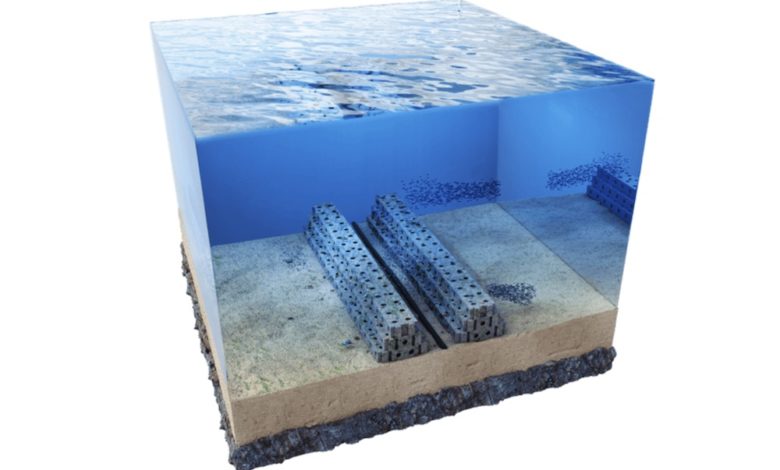UK firm transforms offshore structures into artificial reefs

A company from Cornwall in the southwest of England, which turns oil platforms and offshore windfarms into artificial ocean reefs, has secured a £60,000 ($85,000) Innovate UK grant.
Founded by a team of divers, ARC Marine protects seabed infrastructure with hollow cubes that give endangered and commercial species a place to hide, sleep hunt and breed.
“Most reef restoration programmes are currently paid for by NGOs and charities,” said Tom Birbeck, CEO, ARC Marine. “We wanted to create something much more scalable, so targeted offshore oil platform and wind farm developers with an attractive proposition, both financially and ecologically.”
The company uses hollow, stackable, LEGO-like reef cubes that protect seabed infrastructure, such as cables, while providing commercial and endangered species with a place to live.
Unlike the concrete mattresses currently in operation, these cubes are not classed as marine litter and do not need to be recovered at great expense during decommissioning.
Flat oyster reefs have declined by 85% globally and 95% in Europe since 1890
While coral reefs attract headlines, ARC Marine is focusing on flat oyster reefs which have declined by 85% globally and 95% in Europe since 1890. A single oyster can filter 180 litres of water per day, consuming farm fertiliser runoff, preventing algae from suffocating ocean ecosystems and providing habitats for marine life.
ARC Marine aims to become the global leader in accelerating reef creation with its reef cubes. By 2024, ARC Marine aims to be turning over £15m with major contracts in China, Europe and the US.
